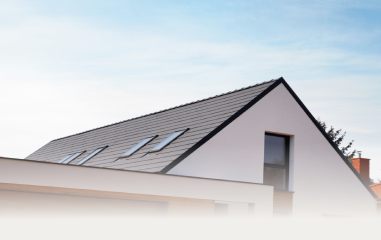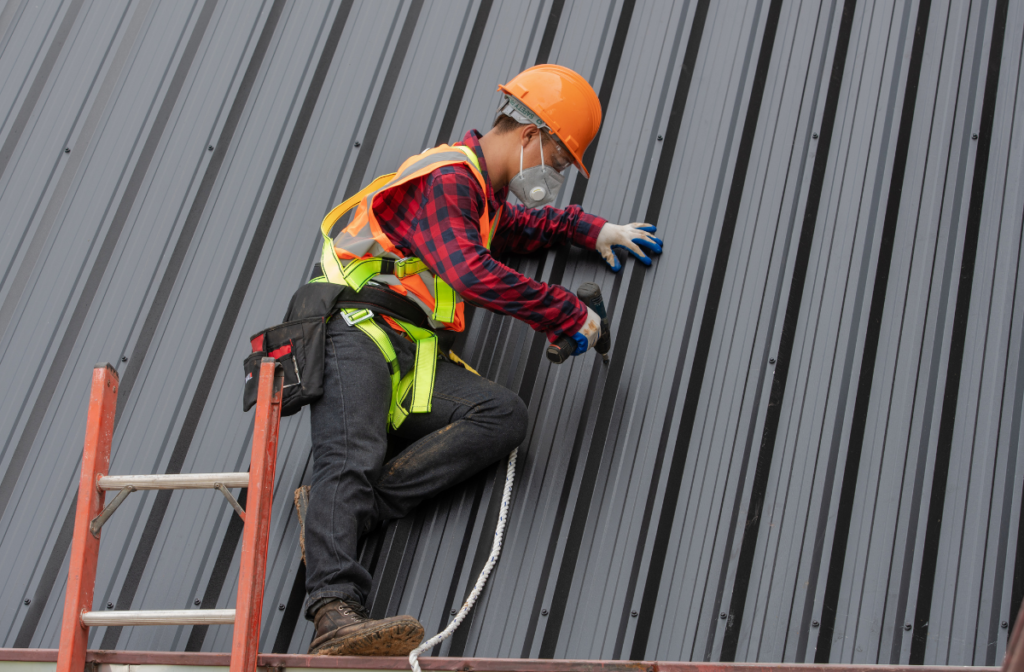Your homeowner’s insurance may cover your roof leak. It depends on the exact circumstances that led to it. Read on to learn if your roof is covered.
Homeowners are often faced with unexpected repairs, and one of the most common issues is roof leaks. While addressing a leaky roof can be stressful, many people wonder: Does homeowner’s insurance cover roof leaks?
The answer is not always straightforward, as it depends on the cause of the damage, the specific terms of your policy, and whether you’ve maintained your home properly.
In this article, we’ll explore how homeowner’s insurance typically handles roof leaks and what steps you can take to ensure you’re adequately protected.
Table of Contents
When Does Homeowner’s Insurance Cover Roof Leaks?

In most cases, homeowner’s insurance will cover a roof leak if it is caused by an “insured peril”.
“Insured peril” is an important term to look for in your insurance policy.
These can include things like:
- Windstorms
- Hail damage
- Fire
- Lightning strikes
- Falling objects, such as branches or debris
- Weight of snow, ice, or sleet
If your policy includes these types of coverage and your roof sustains damage from them, then your insurance should cover the cost of repairs. Notice that all of these perils have an element of suddenness to them. This is because homeowner’s insurance typically covers sudden and accidental damage, rather than wear and tear or neglect.
Dealing with a leaky roof? Give us a call today
When Doesn’t Homeowner’s Insurance Cover Roof Leaks?

There are several situations where homeowner’s insurance may not cover a roof leak. It’s important to understand these exclusions so that you can properly maintain your home and avoid any surprises when it comes to coverage.
Wear and Tear
Over time, roofs naturally deteriorate due to age and exposure to the elements. If your roof has reached the end of its lifespan and begins leaking as a result, homeowner’s insurance will likely not cover the repairs.
Similarly, if you have neglected proper maintenance on your roof (such as clearing away debris or repairing damaged areas), your insurance may consider the leak to be a result of your own negligence and deny coverage.
Flooding
Homeowner’s insurance typically does not cover damage from flooding, including leaks caused by floodwaters. If you live in an area prone to flooding, it’s important to look into purchasing separate flood insurance.
Gradual Damage
As mentioned before, homeowner’s insurance typically covers sudden and accidental damage. This means that if your roof has been leaking for a while and has caused gradual damage (such as mold growth or rot), your insurance may not cover the repairs.
Improper Installation
If your roof was not properly installed or maintained by a licensed professional, your insurance may deny coverage for any resulting leaks. It’s important to make sure that any repairs or replacements on your roof are done by qualified contractors.
Examples of Roof leaks: Covered vs. Not Covered
These examples of when a roof leak is covered by insurance may be helpful.
Scenario | Covered by Insurance? | Explanation | A tree falls on your roof during a storm | Yes | Damage caused by a sudden and accidental event like a fallen tree is typically covered by homeowner’s insurance. |
|---|---|---|
A roof leak caused by wear and tear | No | Insurance does not cover damage resulting from normal aging or lack of maintenance. |
Heavy hailstorm damages the roof | Yes | Hailstorms are considered sudden and accidental events, making the resulting damage eligible for coverage. |
Leaks caused by poor initial installation | No | Improper installation is typically considered the responsibility of the homeowner or contractor and is not covered by insurance policies. |
High winds rip off shingles | Yes | Wind damage is usually covered as it is considered a sudden, accidental event under most homeowner’s insurance policies. |
As you can see, insurance usually covers sudden events that cause damage to your roof. They don’t cover issues that are the result of poor maintenance, normal wear and tear, or improper installation.
The Importance of Regular Roof Maintenance

To prevent future issues with your roof, it’s important to regularly maintain it. This includes ensuring that gutters are clean and free of debris, checking for damaged or missing shingles, and properly ventilating the attic. Regular maintenance can help identify potential issues before they become major problems and can extend the lifespan of your roof.
How To Spot Roof Leaks Early On

It’s important to catch roof leaks early on before they cause major damage to your home. Signs of a leaky roof include:
- Water spots on your ceiling
- Damp or musty smells in your attic
- Visible damage to your shingles
- Peeling or bubbling paint on walls or ceilings
- Dripping water or puddles during or after rainfall
- Streaks or stains along the walls or roof decking in the attic
- Increased energy bills
If you notice any of these signs, it’s important to address the issue as soon as possible.
Seeing signs of a leaky roof? Call us today for a free roof inspection.
What To Do If You Spot A Roof Leak

So let’s say you spot a leak in your roof. What should you do? And how do you get insurance to pay for roof repairs or even a new roof? Follow these steps:
Step 1: Assess The Damage
First, assess the damage to your roof and determine the extent of the repair needed. If you’re not comfortable doing this yourself, contact a professional roofing contractor to inspect your roof.
At M&M Roofing we provide free roof inspections for homes in Houston, San Antonio, Austin, Beaumont, and Lake Charles. Contact us for a thorough, expert assessment of your roof. We can tell you exactly what needs to be done to fix the problem.
Step 2: Document The Damage
Take photos or videos of the damage to provide evidence for your insurance claim. Make sure to document all affected areas and include close-up shots as well as wider shots to show the full extent of the damage. Include any documentation from the roofing company.
Step 3: Contact Your Insurance Company
Contact your homeowner’s insurance company and file a claim for roof repairs. They will likely send an adjuster to inspect the damage in person and determine coverage. Be sure to provide them with the documentation and evidence you have gathered.
Step 4: Contact A Roofing Contractor
While waiting for your insurance claim to be processed, contact a reputable roofing contractor to schedule repairs. Make sure they are licensed and insured, and ask for references from previous clients. M&M Roofing has over 30 years of experience serving customers with quality roof repair and replacement services.
Step 5: Keep Records Of All Expenses
Keep track of all expenses related to the repairs, including receipts for materials and labor costs. This will help you when filing a claim and can also be used for tax purposes.
Final Thoughts
Dealing with roof leaks can be a stressful and overwhelming experience. However, they must be dealt with. And quickly at that.
Remember to always prioritize your safety and contact professionals for help if needed. And when it comes to roofing repairs, trust M&M Roofing for reliable and high-quality services. We have years of experience with roof insurance claims.


















